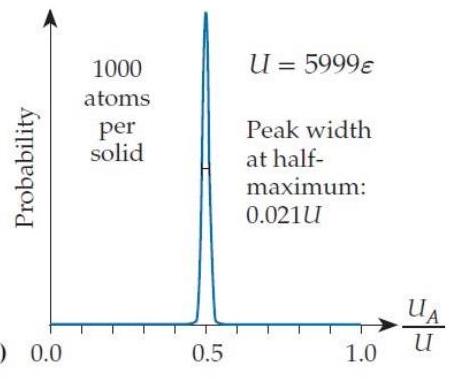Multiple Choice
In the situation shown in figure T2.5c, the width of the bell curve at half its peak value is . If we multiply , , and by a factor of 100 , then the peak's width (as you can check) is about . Suppose that we increase each solid's and the system's total energy by another factor of to create solids containing of a mole of atoms (still pretty small objects by everyday standards) . Assuming that the trend continues, what will be the approximate width of the combined system's probability bell curve as a fraction of ?
A)
(c) 0.0
B)
Figure T2.5
C)
D)
E)
F)
. Some other factor (specify) .
Correct Answer:

Verified
Correct Answer:
Verified
Q99: Problems T7T. 3 through T7T. 7 refer
Q100: In each of the processes described below,
Q101: Which of the following devices are heat
Q102: Consider a system consisting of two
Q103: Problems T7T. 3 through T7T. 7
Q105: Characterize each of the following processes as
Q106: Consider each of the following processes.
Q107: Problems T7T. 3 through T7T. 7
Q108: Suppose that we allow an ideal
Q109: <span class="ql-formula" data-value="N"><span class="katex"><span class="katex-mathml"><math xmlns="http://www.w3.org/1998/Math/MathML"><semantics><mrow><mi>N</mi></mrow><annotation encoding="application/x-tex">N</annotation></semantics></math></span><span